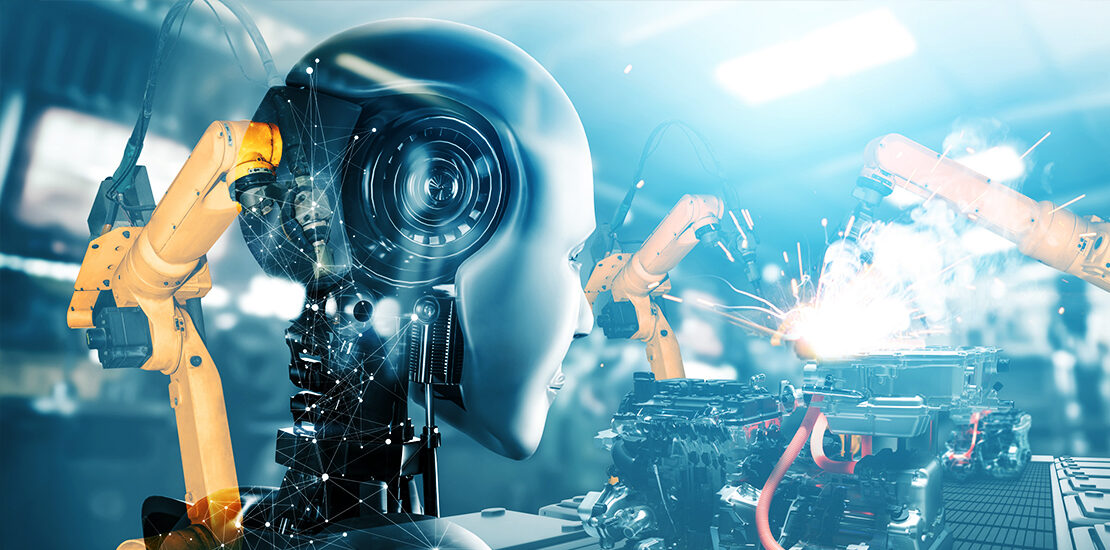- March 19, 2023
- Posted by: Dordea Paul
- Categories: Digitalization, Innovation, International, IT

As Artificial Intelligence goes from strength to strength, it’s set to do for manufacturing operations what robotics did for the factory floor.
Talk of AI in manufacturing might sound futuristic, but the technology is already hard at work in the sector. More than half of European manufacturers (51 percent) are implementing AI solutions, along with almost a third in Japan (30 percent) and the United States (28 percent), according to Capgemini’s ‘Scaling AI in Manufacturing Operations’ report.
The benefits of leveraging AI look set to be substantial. By 2025, manufacturers will lower operational costs by 10 percent by combining hyper-automation technologies enabled by AI and redesigned operational processes, according to Gartner. Just as industrial robots graduated from spot welding cars to handling more intricate jobs and performing specific tasks, AI is improving to the point where it can be trusted with more complex tasks on the factory floor as well as in the maintenance workshop, design studio, and back office.
Advancements in AI-powered language models such as Microsoft-backed ChatGPT and Google’s Bard have seen them develop a better grasp of both content and context, in any given field of expertise. Rather than simply replace people, the idea is for AI to assist people with complex but mundane tasks. This will free up people to focus on those higher-value areas which still require the human touch.
Maintenance
Today, maintenance accounts for the largest share of AI implementations in manufacturing, according to Capgemini’s report. While manufacturers have access to vast amounts of analytical data, they currently discard 98 percent of all the data they can collect because they lack the operational analytics capabilities to integrate that data into their operations, according to Fero Labs.
This is changing with the application of AI in manufacturing. It is taking the concept of predictive maintenance to the next level – picking up on subtle clues by monitoring the sounds, vibrations, and other characteristics of the machinery, in order to glean insight into how it’s performing. This allows manufacturers to optimize maintenance schedules, identify faults and predict breakdowns before they cause costly downtime, damage, and accidents.
Quality
Quality currently accounts for the second-largest share of AI implementations in manufacturing. The AI technologies applied to predictive maintenance of equipment already in service can also be used to improve quality assurance testing before machinery leaves the factory.
More generally, AI can also interpret the vast amounts of information generated by data-driven, interconnected assembly lines. Detecting subtle changes and unusual patterns, along with leveraging AI-powered technologies like machine vision, allows manufacturers to be proactive and quickly nip quality control issues in the bud.
Production
While maintenance and quality are the low-hanging fruit, AI is also tackling more advanced manufacturing challenges. AI-powered language models such as ChatGPT are primarily focused on content production, but the underlying technology has applications far further afield.
Manufacturing enterprise software Reveal offers an example of using AI similar to ChatGPT to detect variability at each station in the production process and communicate the necessary corrections to the plant floor personnel. Along with allowing manufacturers to quickly address production issues, the technology can also make recommendations for improvements that will lead to more efficient and consistent production.
Supply Chain and Logistics
The disruption of the pandemic has forced manufacturers to forge more resilient supply chains. From forecasting the price of raw materials and optimizing inventory levels to anticipating demand and streamlining distribution, AI can help manufacturers ensure that things flow more smoothly every step of the way. Using AI to predict buying behavior helps manufacturers anticipate demand, so they can align production and distribution accordingly.
For example, US clothing retailer Fruit of the Loom used AI to scour its data for insight and found that shoppers rush out to stock up on winter fleeces when the autumn forecast predicts a temperature decrease of at least 12 degrees Fahrenheit over a space of six days. Armed with this insight, Fruit of the Loom cross-references weather forecasts and inventory data to ensure retail partners have full stocks of fleece products ahead of autumn cold spells in their area.
Generative Design
Generative design offers an example of where AI can augment humans rather than replace them when it comes to more complex and nuanced tasks. AI-powered generative design allows designers and engineers to input design goals, along with parameters such as size, performance, materials, manufacturing methods, and cost constraints. The software then explores all the possible permutations, generates design alternatives, and tests those designs to learn what works and what doesn’t.
Along with reducing design cycles and time to market, generative design allows designers to create innovative solutions. Another advantage is the ability to automate the production of parts for customized products, according to Gartner, particularly when combined with 3D printing those parts.
.
source: directindustry.com
Leave a Reply
You must be logged in to post a comment.
